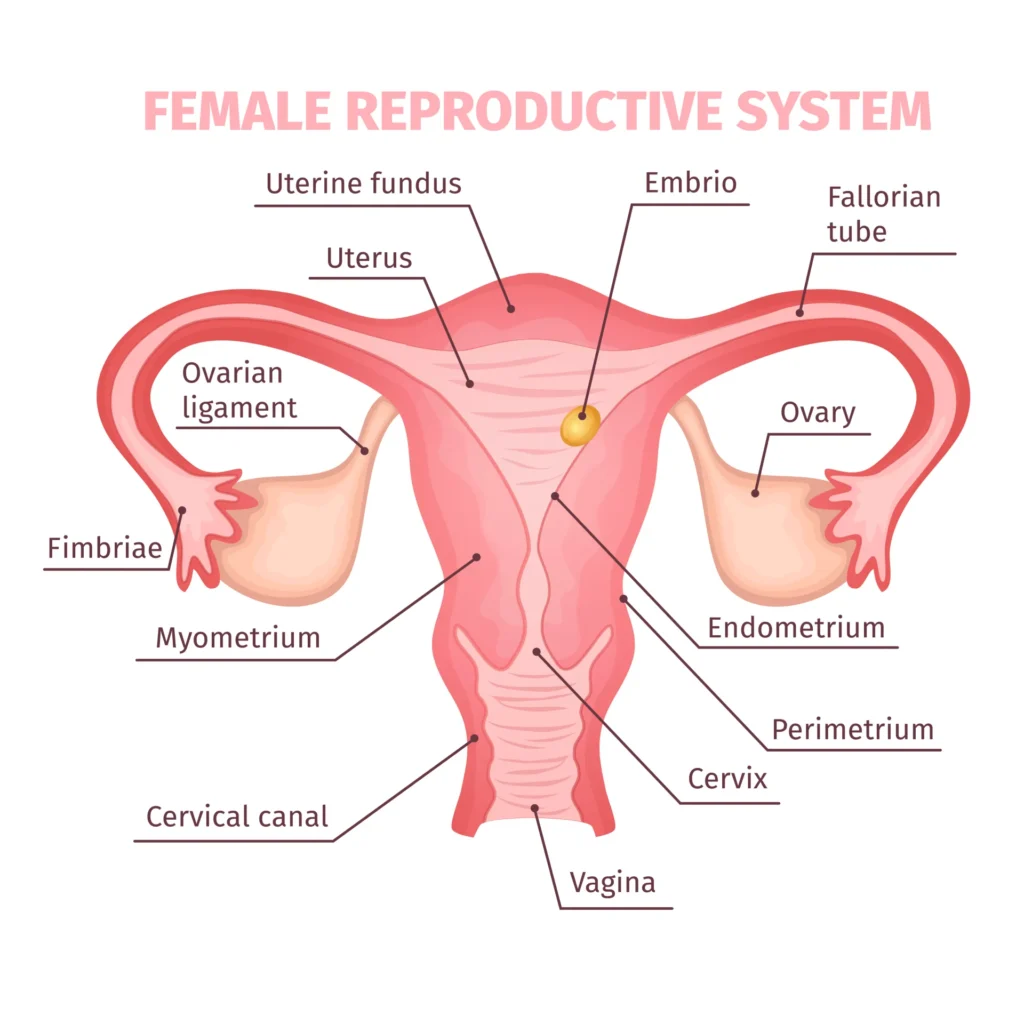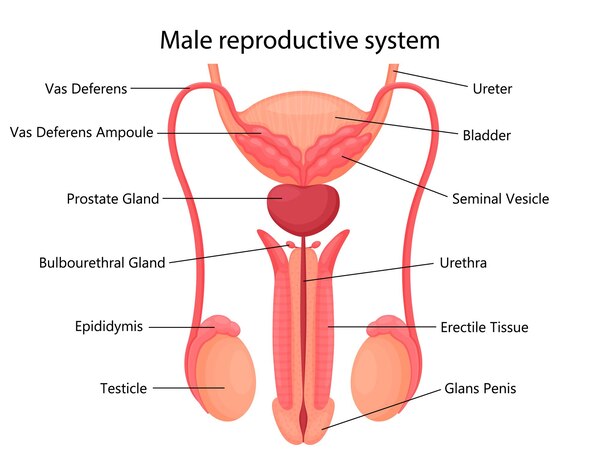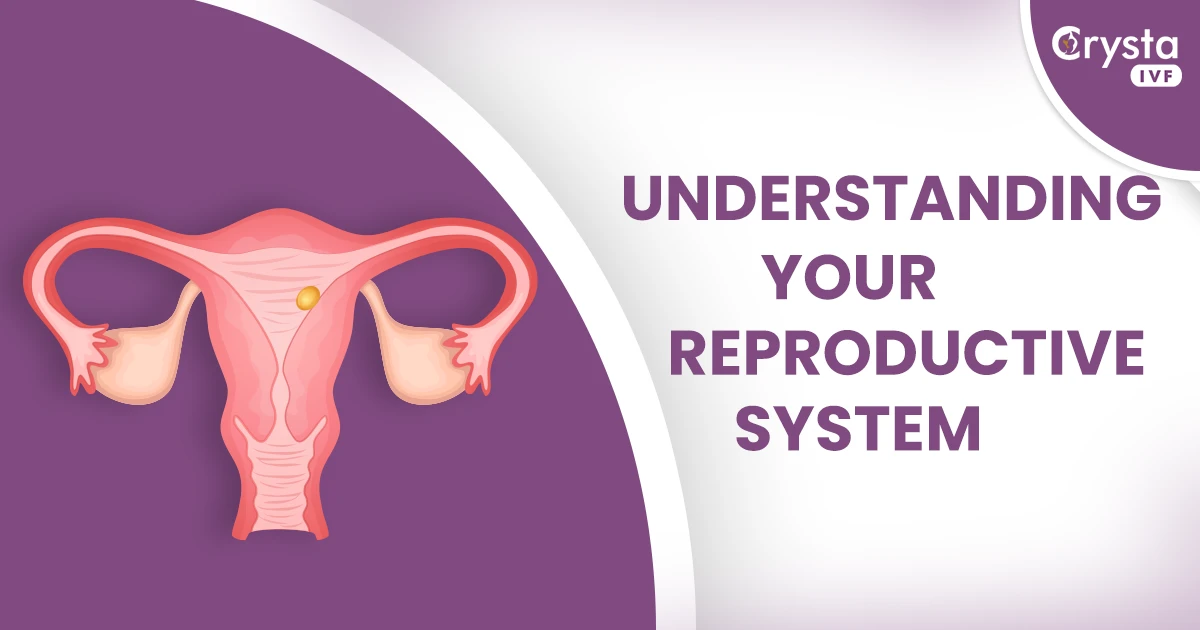The role of the female and Male reproductive system
Certainly! The process of producing offspring is carried out by the reproductive system. It involves a number of human organs and structures, each of which has a specialized role that cooperates to support reproduction.
It may be difficult to understand your reproductive system, so let’s break it down into easier-to-understand interactive diagrams that will teach you more about the reproductive systems of men and women.
Primary Reproductive Organs (Gonads)
Testes in Males: Testes are responsible for producing sperm cells and secrete testosterone, the primary male sex hormone.
Ovaries in Females: Ovaries produce eggs and secrete estrogen and progesterone. They are primary female sex hormones.
Female Reproductive System

Ovaries
The main reproductive organs in women are the ovaries, which also secrete hormones like progesterone and estrogen that control ovulation, the menstrual cycle, and pregnancy.
Fallopian Tubes – Oviducts
The uterus and ovaries are joined by these tubes. They act as a route for the ovaries’ released eggs to take as they move toward the uterus. Usually, when sperm and egg come together, fertilization occurs in the fallopian tubes.
Uterus
During pregnancy, a fertilized egg implants and grows into a fetus in the uterus, a pear-shaped organ. It comprises the endometrium, which cyclically thickens to support pregnancy during the menstrual cycle. In the absence of pregnancy, the lining sheds during the menstrual cycle.
Cervix
The lower portion of the uterus that joins the vagina is called the cervix. It serves as a conduit for sperm entry during fertilization, acts as a barrier against infections within the uterus, and acts as a barrier between the uterus and the vagina.
Vagina
Stretching from the cervix to the external genitalia, the vagina is a muscular canal. It acts as the birth canal during childbirth, a conduit for menstrual blood, and a place to receive the penis during sexual activity.
Vulva
The vaginal opening, clitoris, labia majora, and minora are the external genitalia, which are referred to as the vulva. These structures are involved in sexual arousal and pleasure as well as protecting the internal reproductive organs.
Bartholin’s Glands
These are tiny glands near the vaginal opening that secret fluids to lubricate the vagina.
Role Of These Organs
During pregnancy, the female reproductive system is very important. The female reproductive system changes significantly during conception (the fusing of an egg cell and a sperm cell) in order to support and nurture the growing fetus.
The female reproductive system plays the following crucial roles during pregnancy:
Fertilization: A sperm cell penetrates an egg cell and combines with it to form a zygote in the fallopian tubes during fertilization.
Implantation: The zygote starts to divide after fertilization and develops into a ball of cells known as a blastocyst. After passing through the fallopian tube, the blastocyst implants itself in the endometrium, the lining of the uterus. During pregnancy, the embryo will continue to develop in this area.
Hormonal Changes: A woman’s body experiences notable hormonal changes during pregnancy. The ovaries and the placenta produce the hormones progesterone and estrogen, which aid in maintaining the uterine lining, promoting fetal growth, and delaying menstruation.
Supply of Nutrients and Oxygen: The placenta receives these necessities from the mother’s uterine blood vessels, which subsequently pass them on to the growing fetus.
Protection and Support: The fetus is surrounded by the amniotic sac, which is filled with amniotic fluid, inside the uterus. This fluid acts as a cushion, shields the developing embryo from outside shocks, aids in temperature regulation, and permits fetal movement.
Labor and Delivery: As a pregnancy comes to an end, the uterus contracts rhythmically, which triggers labor. The cervix dilates during childbirth, making room for the baby to pass through the vagina (birth canal) and be delivered.
Placenta Formation: The placenta is an essential link between the mother and the fetus that grows inside the uterus. The fetus receives oxygen, nourishment, and waste product elimination from the mother’s bloodstream.
Male Reproductive System

The various organs that make up the male reproductive system function as a unit to create, move, and distribute sperm for reproduction. The primary male reproductive organs and their functions are as follows:
Testicles
The main male reproductive organs, the testes, are in charge of the process known as spermatogenesis, which takes place inside seminiferous tubules and produces sperm cells. The main hormone involved in male sex, testosterone, is also produced by the testes.
Epididymis:
The testes produce sperm cells, which are transported to the epididymis for storage and maturation. Sperm acquire motility in this coiled tube, which enables them to fertilize an egg.
Vas Deferens (Ductus Deferens):
During ejaculation, mature sperm are transported from the epididymis to the urethra by the muscular tube known as the vas deferens. Sperm use it as a passageway to get to the urethra and leave the body.
Bulbourethral glands, Prostate Gland, and Seminal Vesicles:
Seminal fluid, produced by these accessory glands, combines with sperm to form semen. The prostate gland and seminal vesicles secrete sperm-nourishing and sperm-protecting fluids. The bulbourethral glands secrete a lubricating fluid that cleanses the urethra before ejaculation.
Urethra
The urethra is a tube that serves as a passageway for both urine and semen. It carries semen from the ejaculatory ducts to the outside of the body during ejaculation.
Penis
The male external reproductive organ is the penis. During sexual activity, it is the organ that transfers sperm into the female reproductive system and houses the urethra. The penis becomes erect during sexual arousal, enabling penetration into the vagina.
Scrotum
The testes are housed and shielded by the skin and muscle sac known as the scrotum. It assists in controlling the testicular temperature, essential for preserving healthy sperm production.
Together, these organs create and move sperm, which is required for fertilization during sexual activity. Hormonal regulation, which is mainly controlled by testosterone, affects how male reproductive organs develop and function, as well as secondary sexual traits.
Understanding the reproductive system is important for understanding fertility, contraception, pregnancy, and overall reproductive health. Regular check-ups and proper care are essential for maintaining reproductive health and addressing any potential issues.
Roles of Male reproductive organs in pregnancy
Together, the male reproductive organs create and distribute sperm, which is required for fertilization. Spermatogenesis is the process by which sperm production starts in the testes. To become mature sperm cells, specialized cells within the testes’ seminiferous tubules divide and differentiate. The epididymis, a coiled tube found on the back of each testicle, is where newly formed sperm cells travel. Sperm develops and acquires motility (the capacity to move independently) in the epididymis. This is where they are kept until ejaculation. The male reproductive system gets ready for ejaculation during sexual arousal. Sperm are thus released into the vas deferens from the epididymis.
Seminal fluid is produced by accessory glands like the prostate gland, bulbourethral glands, and seminal vesicles. Semen is created when this liquid combines with sperm from the vas deferens. Sperm survival and motility are facilitated by the nutrients, enzymes, and medium found in seminal fluid.
Seminal fluid from the accessory glands mixes with sperm as they pass through the vas deferens. Semen is created by this mixture, which is then released from the penis during ejaculation after passing through the urethra.
Viable sperm must enter the fallopian tube and fertilize an egg for conception. The likelihood of conception depends on the male reproductive system’s capacity to generate viable, motile sperm. Sperm motility, count, and morphology (shape) are a few factors that can affect fertility and the chance of a successful conception.
Hence, Understanding the reproductive system is important for understanding fertility, contraception, pregnancy, and overall reproductive health. Regular check-ups and proper care are essential for maintaining reproductive health and addressing any potential issues.




